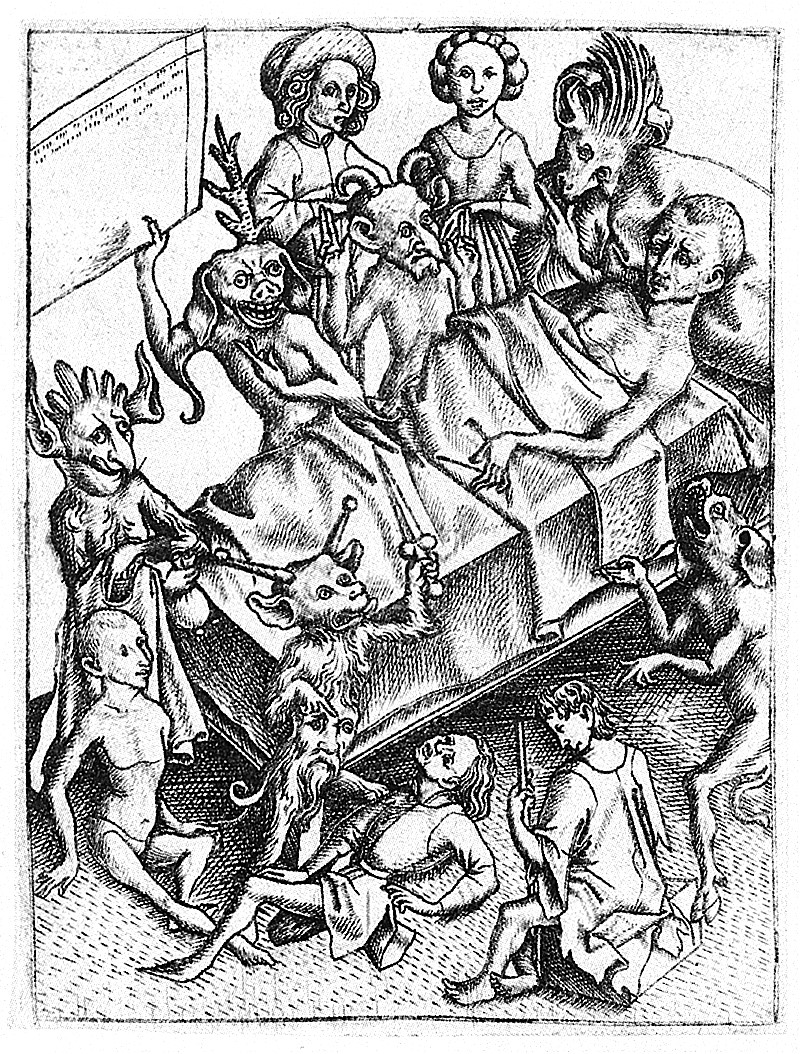By Tessa Davidson, assistant professor of art
“You can’t talk about death,” is what my graduate school mentor said after I expressed a desire to create paintings about my dying grandma.
Perhaps I shouldn’t have been surprised by the response. We are living in a unique time and place in history. Modern Americans are not only uncomfortable talking about death — we often even pretend it doesn’t exist. But if the topic of death is left out of academic discourse, visual culture and popular media, where can we turn to for healthy counsel and reflection?
Six hundred years ago, Europeans did not shy away from such discussions. They even wrote a manual on how to die well called Ars Moriendi (The Art of Dying). This Latin text was written in the aftermath of the Black Death and served as a guide to help deathbed parishioners navigate their final days of life. The text was wildly popular in its day and was one of the first books printed on Gutenberg’s press. As the text circulated, engraved illustrations were incorporated, and they became a visual guide for the majority of its users. The illustrations are intriguing works in their own right and are filled with creative imagery and multiple layers of symbolism.
While Ars Moriendi was used to counsel tens of thousands, one might wonder if a 15th century death manual has valuable insights for us today.
When I began researching the Ars Moriendi text and illustrations, I interviewed hospice workers and asked them about the prominence of the struggles it outlines: lack of faith, despair, impatience, spiritual pride and greed. Through these interviews, I learned that the struggles they faced then are the same struggles we face today. There is certainly something universal about the way humans think about death.
 Not only does the text connect with the concerns of a modern audience, but the illustrations do as well. “Temptation to Despair” portrays a man on his deathbed surrounded by six demons. The demons remind him of his past mistakes and represent the inner thoughts of regret, shame and despair.
Not only does the text connect with the concerns of a modern audience, but the illustrations do as well. “Temptation to Despair” portrays a man on his deathbed surrounded by six demons. The demons remind him of his past mistakes and represent the inner thoughts of regret, shame and despair.
Although modern scientists and physicians may balk at a medieval portrayal of demons at a bedside, the strangeness of the imagery points to a gap in our current visual culture. The struggle to despair over past mistakes is a major issue today, yet spiritual symbols used to express these ideas have been stripped from our visual vocabulary. It would seem our current de-mystified images are insufficient for addressing the holistic concerns of the dying. Spiritual struggles demand spiritual expressions and imagery.
Spiritual questions also demand responses. This is why I believe the Christian faith is uniquely situated to respond to the current questions about death: Christianity takes death seriously. Its theology, doctrines and visual history have never shied away from existential topics. In the Christian faith, adherents can contextualize one’s life in a grander story and receive hope and responses to deathbed questions, as evident in Ars Moriendi.
As an artist, I believe we need more imagery exploring ideas of death and end-of-life struggles. If we can’t find it in contemporary culture, we must look to the poignant works from the 15th century to foster our reflections. We can’t keep sweeping these conversations under the bed: we need to talk about death.